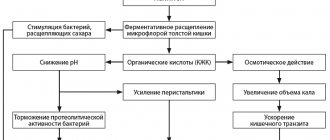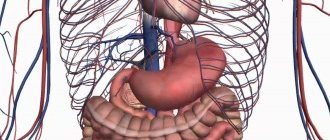Write a review
Reviews: 0
Manufacturers: ICN Jugoslavija
Active ingredients
- Insulin isophane [human semi-synthetic]
Disease class
- Insulin-dependent diabetes mellitus
- Non-insulin dependent diabetes mellitus
Clinical and pharmacological group
- Not indicated. See instructions
Pharmacological action
- Hypoglycemic
Pharmacological group
- Insulins
Vozulim-H
INSTRUCTIONS
ON THE MEDICAL USE OF THE DRUG
VOZULIM-N
Registration number: LP-000323
Trade name: Vozulim-N
INN: Insulin isophane (human genetically engineered)
Dosage form:
Suspension for subcutaneous administration
1 ml of the drug contains:
active substance:
human insulin (genetically engineered) - 100 IU (4.00 mg);
Excipients:
protamine sulfate – 0.40 mg, zinc oxide – 0.032 mg, metacresol – 1.60 mg, phenol – 0.65 mg, glycerol – 16.32 mg, sodium phosphate disubstituted anhydrous – 2.08 mg, sodium hydroxide – 0, 40 mg, hydrochloric acid – 0.00072 ml, water for injection – up to 1 ml.
Description:
A white suspension that, when standing, separates into a clear, colorless or almost colorless supernatant and a white precipitate. The sediment is easily resuspended with gentle shaking.
Pharmacotherapeutic group:
Hypoglycemic agent, intermediate-acting insulin.
ATX code -A10AC01.
Pharmacological properties:
Pharmacodynamics. Vozulim-N is a medium-acting human recombinant insulin preparation. It interacts with a specific receptor on the outer cytoplasmic membrane of cells and forms an insulin-receptor complex that stimulates intracellular processes, including the synthesis of a number of key enzymes (hexokinase, pyruvate kinase, glycogen synthase, etc.). The decrease in blood glucose levels is due to an increase in its intracellular transport, increased absorption and assimilation by tissues, stimulation of lipogenesis, glycogenogenesis, a decrease in the rate of glucose production by the liver, etc. The duration of action of insulin preparations is mainly determined by the rate of absorption, which depends on several factors (for example, on the dose , method and place of administration), and therefore the profile of insulin action is subject to significant fluctuations, both in different people and in the same person. The onset of action of the drug is 1 hour after administration, the maximum effect is between 2 and 8 hours, the duration of action is 18-20 hours.
Pharmacokinetics. The completeness of absorption and the onset of the effect of insulin depends on the method of administration (subcutaneous, intramuscular), injection site (abdomen, thigh, buttocks), dose (volume of insulin administered), insulin concentration in the drug, etc. It is distributed unevenly throughout the tissues; does not penetrate the placental barrier and into breast milk. It is destroyed by insulinase mainly in the liver and kidneys. Excreted by the kidneys (30-80%).
Indications for use:
Diabetes.
Contraindications:
— Hypersensitivity to insulin or other components of the drug;
- Hypoglycemia.
Use during pregnancy and lactation
There are no restrictions on the treatment of diabetes mellitus with insulin during pregnancy, since insulin does not penetrate the placental barrier. When planning pregnancy and during it, it is necessary to intensify the treatment of diabetes mellitus. Insulin requirements usually decrease in the first trimester of pregnancy and gradually increase in the second and third trimesters.
During and immediately after childbirth, the need for insulin may decrease dramatically. Shortly after birth, insulin requirements quickly return to pre-pregnancy levels. There are no restrictions on the treatment of diabetes mellitus with insulin during breastfeeding. However, a reduction in the insulin dose may be necessary, so careful monitoring is necessary for several months until insulin requirements stabilize.
Directions for use and dosage:
The drug is intended for subcutaneous administration. The dose and time of administration of the drug are determined by the doctor individually in each specific case, based on the concentration of glucose in the blood. On average, the daily dose of the drug ranges from 0.5 to 1 IU/kg body weight (depending on the individual characteristics of the patient and blood glucose concentration).
The temperature of the administered insulin should be at room temperature.
The drug is usually injected subcutaneously into the thigh. Injections can also be made into the anterior abdominal wall, buttock or shoulder in the projection of the deltoid muscle.
It is necessary to change injection sites within the anatomical region to prevent the development of lipodystrophy.
Vozulim-N can be administered either alone or in combination with short-acting insulin (Vozulim-R).
Use the cartridge only with a syringe pen.
Side effect:
Caused by the effect on carbohydrate metabolism: hypoglycemic conditions (pallor of the skin, increased sweating, palpitations, tremor, hunger, agitation, paresthesia of the oral mucosa, headache). Severe hypoglycemia can lead to the development of hypoglycemic coma.
Allergic reactions: skin rash, angioedema, extremely rarely - anaphylactic shock.
Local reactions: hyperemia, swelling and itching at the injection site, with long-term use - lipodystrophy at the injection site.
Other - edema, transient refractive errors (usually at the beginning of therapy).
Overdose
In case of overdose, hypoglycemia may develop.
Treatment: the patient can eliminate mild hypoglycemia himself by ingesting sugar or carbohydrate-rich foods. Therefore, patients with diabetes are advised to carry sugar, sweets, cookies or sweet fruit juice with them at all times.
In severe cases, when the patient loses consciousness, a 40% dextrose (glucose) solution is administered intravenously; intramuscularly, subcutaneously, intravenously - glucagon. After regaining consciousness, the patient is advised to eat a meal rich in carbohydrates to prevent the recurrence of hypoglycemia.
Interaction with other drugs
Pharmaceutically incompatible with solutions of other drugs.
There are a number of medications that affect the need for insulin.
The hypoglycemic effect of insulin is enhanced by non-selective beta-blockers, quinidine, quinine, chloroquinine, monoamine oxidase inhibitors, angiotensin-converting enzyme inhibitors, carbonic anhydrase inhibitors, octreotide, bromocriptine, sulfonamides, anabolic steroids, tetracyclines, clofibrate, ketoconazole, mebendazole, pyridoxine, theophylline , cyclophosphamide, fenfluramine, lithium preparations, preparations containing ethanol.
The hypoglycemic effect of insulin is weakened by glucagon, somatropin, estrogens, oral contraceptives, glucocorticosteroids, iodine-containing thyroid hormones, thiazide diuretics, loop diuretics, heparin, tricyclic antidepressants, sympathomimetics, danazol, clonidine, sulfinpyrazone, epinephrine, H1-histamine blockers. ors, blockers of “slow” calcium channels, diazoxide, morphine, phenytoin, nicotine.
Reserpine and salicylates can both enhance and weaken the hypoglycemic effect of insulin.
Special instructions:
During insulin therapy, constant monitoring of blood glucose concentration is necessary.
In addition to insulin overdose, the causes of hypoglycemia can be: drug replacement, skipping meals, vomiting, diarrhea, increased physical activity, diseases that reduce the need for insulin (impaired liver and kidney function, hypofunction of the adrenal cortex, pituitary gland or thyroid gland), change of injection site, as well as interactions with other drugs.
Incorrect dosing or interruptions in insulin administration, especially in patients with type 1 diabetes, can lead to hyperglycemia. Typically, the first symptoms of hyperglycemia develop gradually, over several hours or days. They include the appearance of thirst, increased urination, nausea, vomiting, dizziness, redness and dryness of the skin, dry mouth, loss of appetite, and the smell of acetone in the exhaled air. If left untreated, hyperglycemia in type 1 diabetes can lead to life-threatening diabetic ketoacidosis.
The dose of insulin must be adjusted in case of dysfunction of the thyroid gland, Addison's disease, hypopituitarism, impaired liver and kidney function, and diabetes mellitus in people over 65 years of age.
Insulin dosage adjustments may also be necessary if the patient increases the intensity of physical activity or changes their usual diet.
Concomitant diseases, especially infections and conditions accompanied by fever, increase the need for insulin.
The transition from one type of insulin to another should be carried out under the control of blood glucose concentrations.
The drug reduces tolerance to alcohol.
Due to the possibility of precipitation in some catheters, the use of the drug in insulin pumps is not recommended.
Do not use the drug if, after shaking, the suspension does not become white or uniformly cloudy.
Impact on the ability to drive vehicles and operate machinery
In connection with the primary prescription of insulin, a change in its type, or in the presence of significant physical or mental stress, there may be a decrease in the ability to drive a car or operate various mechanisms, as well as engage in other potentially hazardous activities that require increased attention and speed of mental and motor reactions.
Release form:
Suspension for subcutaneous administration
100 IU/ml.
3 ml in neutral glass cartridges (type I). A label is placed on the cartridge. 1 or 5 cartridges are placed in a blister made of PVC/aluminum foil.
10 ml in colorless neutral glass bottles, sealed with rubber stoppers and crimped aluminum caps with a plastic safety cap.
Each bottle or each blister with cartridge No. 1 or No. 5 is placed in a cardboard box along with instructions for use.
Storage conditions:
Store in a place protected from light, at a temperature from +2 °C to +8 °C. Do not freeze.
Keep away from children. The drug in use should be stored at a temperature of 15-25 ° C for no more than 6 weeks.
Best before date:
2 years. Do not use after the expiration date stated on the packaging.
Release from pharmacies:
On prescription.
Manufacturer
Wockhard Ltd, India
Wockhardt Towers, Bandra Kurla Complex, Bandra (East), Mumbai - 400051, India/ Wockhardt Towers, Bandra Kurla Complex, Bandra (East), Mumbai - 400 051, India
Representative office in Russia:
119571, Moscow, Leninsky Prospekt, 148,
office 123-124,
tel./fax: 8(495) 434 – 51 – 59
Instructions to be given to the patient
Injection technique when using insulin in vials
If the patient is using only one type of insulin
- Disinfect the rubber membrane of the bottle
2. Fill the syringe with air in a volume corresponding to the required dose of insulin. Inject air into the insulin vial.
3. Turn the bottle with the syringe upside down and draw the required dose of insulin into the syringe. Remove the needle from the vial and remove air from the syringe. Check that your insulin dose is correct.
4.Inject immediately.
If a patient needs to mix two types of insulin
- Disinfect the rubber membranes of the bottles.
2. Immediately before drawing, roll the vial of long-acting insulin (“cloudy”) between your palms until the insulin becomes uniformly white and cloudy.
3. Fill the syringe with air in a volume corresponding to the dose of “cloudy” insulin. Inject air into the vial of cloudy insulin and remove the needle from the vial.
4. Fill the syringe with air in a volume corresponding to the dose of short-acting (“transparent”) insulin. Inject air into the vial of clear insulin. Turn the bottle with the syringe upside down and draw the required dose of “transparent” insulin. Remove the needle and remove air from the syringe. Check the correct dose.
5. Insert the needle into the vial with “cloudy” insulin, turn the vial with the syringe upside down and draw the required dose of insulin. Remove air from the syringe and check that the dose is correct. Inject the collected insulin mixture immediately.
- Always draw insulins in the same sequence described above.
Injection technique when using insulin cartridges
The cartridge with the drug Vozulim-N is intended only for use in syringe pens. You must carefully follow the instructions in the instructions for using the syringe pen for administering insulin.
Before use, make sure that the cartridge with the drug Vozulim-N is not damaged (for example, cracks). Do not use the cartridge if there is any visible damage. After the cartridge is inserted into the pen, a colored stripe should be visible through the window of the cartridge holder.
Before placing the cartridge into the pen, you should turn the cartridge up and down so that the glass ball moves from end to end of the cartridge. This procedure should be repeated at least 10 times until all the liquid becomes white and uniformly cloudy. Immediately after this you need to give an injection.
If the cartridge is already inside the pen, you should turn it with the cartridge inside up and down at least 10 times. This procedure must be repeated before each injection.
After injection, the needle should remain under the skin for at least 6 seconds. You should keep the button pressed until the needle is completely removed from under the skin, thus ensuring the correct administration of the dose and limiting the possibility of blood or lymph getting into the needle or into the insulin cartridge.
The cartridge with the drug Vozulim-N is intended for individual use only and cannot be refilled.
Injection procedure
- Use two fingers to gather a fold of skin, insert the needle into the base of the fold at an angle of about 45° and inject insulin under the skin.
- After injection, the needle must remain under the skin for at least 6 seconds to ensure that the insulin is completely injected.
- If blood appears at the injection site after removing the needle, lightly press the injection site with a swab moistened with a disinfectant solution (for example, alcohol).
- It is necessary to change injection sites.
There are contraindications, you must consult a specialist
Similar drugs:
- Guarem Dosed microgranules
- Amaryl Tablets
- Victoza Solution for injection
- Metformin hydrochloride Substance-powder
- Metformin-Teva Oral tablets
- Galvus Met Oral tablets
- Berlithion Oral tablets
- Januvia Oral tablets
- Glucovance Oral tablets
- Langerin Oral tablets
** The Drug Directory is intended for informational purposes only. For more complete information, please refer to the manufacturer's instructions. Do not self-medicate; Before starting to use the drug Isofan-Insulin ChM, you should consult a doctor. EUROLAB is not responsible for the consequences caused by the use of information posted on the portal. Any information on the site does not replace medical advice and cannot serve as a guarantee of the positive effect of the drug.
Are you interested in the drug Isofan-Insulin ChM? Do you want to know more detailed information or do you need a doctor's examination? Or do you need an inspection? You can make an appointment with a doctor - the Euro lab is always at your service! The best doctors will examine you, advise you, provide the necessary assistance and make a diagnosis. You can also call a doctor at home . Euro lab clinic is open for you around the clock.
** Attention! The information presented in this medication guide is intended for medical professionals and should not be used as a basis for self-medication. The description of the drug Isofan-Insulin ChM is provided for informational purposes and is not intended for prescribing treatment without the participation of a doctor. Patients need to consult a specialist!
If you are interested in any other drugs and medications, their descriptions and instructions for use, information about the composition and form of release, indications for use and side effects, methods of use, prices and reviews of drugs, or you have any other questions and suggestions - write to us, we will definitely try to help you.
Suspension for injection Isofan-Insulin HM (Isofan-Insulin HM)
Instructions for medical use of the drug
Description of pharmacological action
Activates the phosphatidylinositol system, changes the membrane transport of glucose and ions, normalizes membrane polarization (increases potassium entry into the cell), activates hexokinase and glycogen synthetase, promotes the absorption of amino acids by cells.
Indications for use
Insulin-dependent diabetes mellitus: for allergies to other types of insulin, for intensified insulin therapy (needle-free injectors, standard and PEN syringes, etc.), in patients with severe vascular complications of diabetes, for devices with special purposes (artificial pancreas, etc.) ; non-insulin-dependent diabetes (combination therapy with oral hypoglycemic drugs, temporary insulin therapy).
Release form
suspension for injection 40 IU/ml; bottle (bottle) 10 ml; Composition: 1 ml of injection suspension contains human insulin (biosynthetic origin) 40 IU; in bottles of 10 ml.
Pharmacodynamics
Activates the phosphatidylinositol system, changes the membrane transport of glucose and ions, normalizes membrane polarization (increases potassium entry into the cell), activates hexokinase and glycogen synthetase, promotes the absorption of amino acids by cells.
Contraindications for use
Hypoglycemic states, coma.
Side effects
Hypoglycemia (feelings of hunger, fatigue, tremor); allergic reactions; lipodystrophy at injection sites.
Directions for use and doses
S/C, IM, the contents of the bottle are shaken well before use and administered immediately after filling the syringe. The dosage is determined individually.
Precautions for use
Should not be injected into the same place. When taken simultaneously with a fast-acting solution of human insulin, Inutral XM is first drawn into the syringe. Use with caution in cases of renal failure, infections, hypopituitarism, pregnancy, and in persons over 65 years of age.
Storage conditions
List B.: In the refrigerator, at a temperature of 2–8 °C (do not freeze).
Best before date
24 months
ATX classification:
A Digestive tract and metabolism
A10 Drugs for the treatment of diabetes mellitus
A10A Insulins and their analogues
A10AB Insulins and their short-acting analogues
A10AB01 Insulin (human)
Modern insulin preparations
Today it is difficult to imagine that just eighty years ago diabetes was an almost fatal disease. However, since 1939, the first insulin drug appeared on the market, and diabetic patients had a chance to live long and well. Today, according to scientists from the University of Pittsburgh, people with type 1 diabetes live up to 69 years1. What is the drug that gives diabetic patients a long and fulfilling life?
How it works?
Insulin is a hormone produced by beta cells of the pancreas. It is necessary for the cells of the body so that they can remove glucose from the blood and use it for their own “needs”.
In type 1 diabetes, the pancreas cannot produce enough insulin, and the only way to compensate for the dangerous deficiency is to administer the hormone externally as part of insulin therapy. In type 2 diabetes, insulin is produced in sufficient quantities, but the body's cells do not respond to it normally - the sensitivity of tissues to insulin decreases. To increase it, oral hypoglycemic drugs are administered, but in some cases, for example, when it is impossible to compensate for diabetes with pills alone, insulin is still prescribed.




